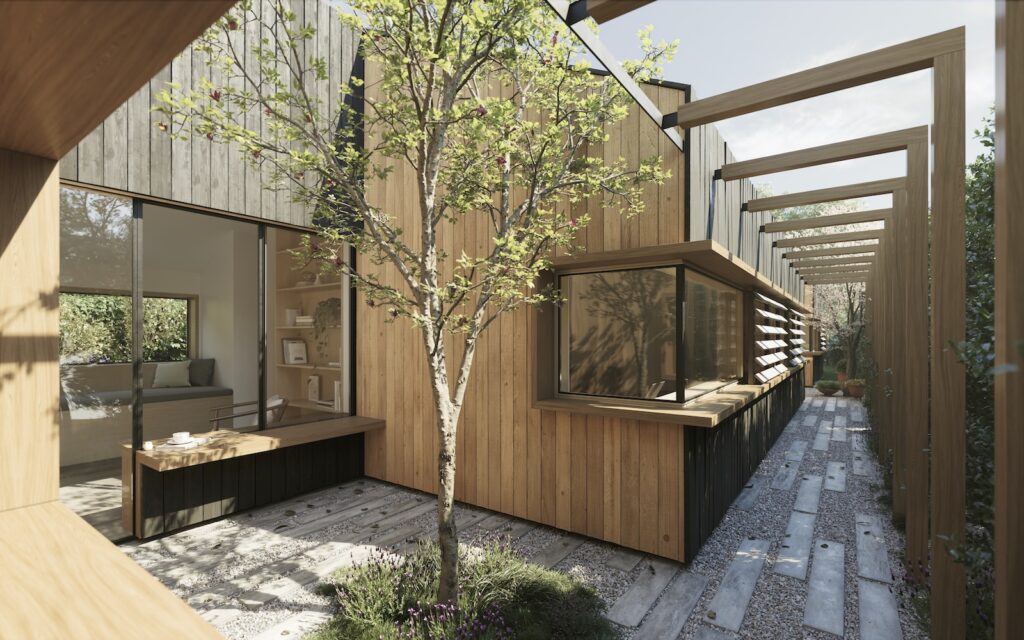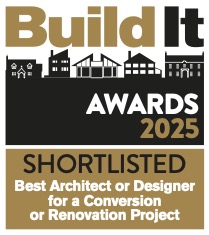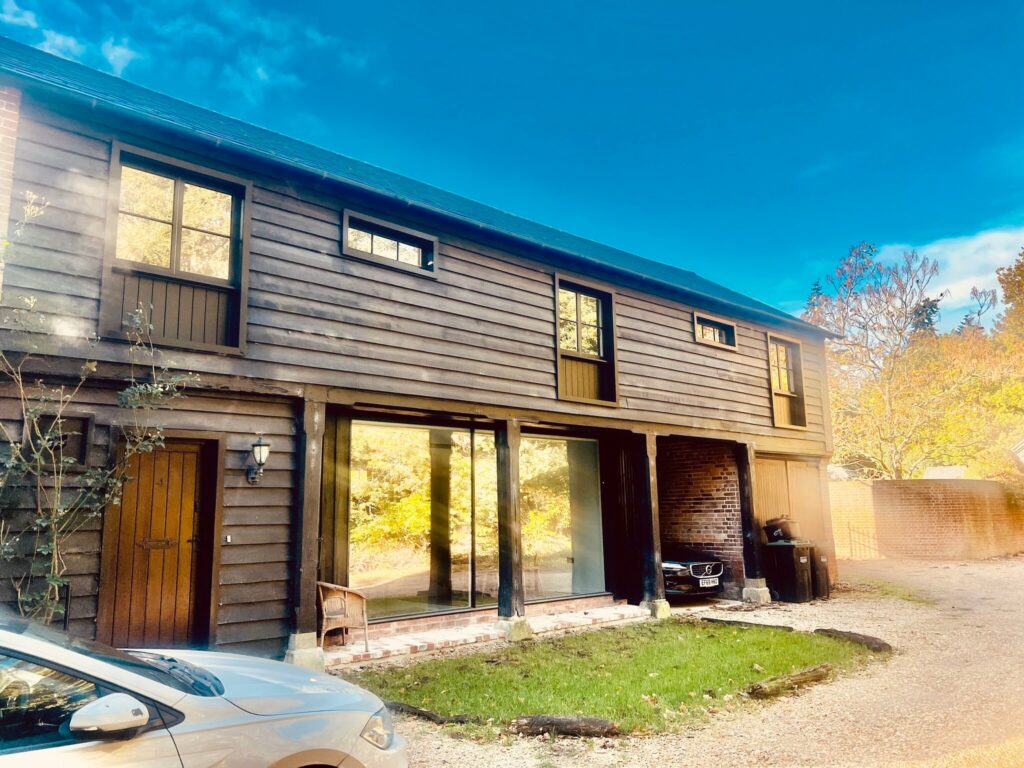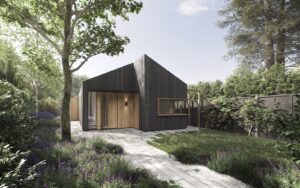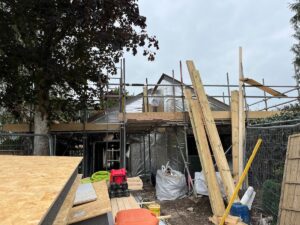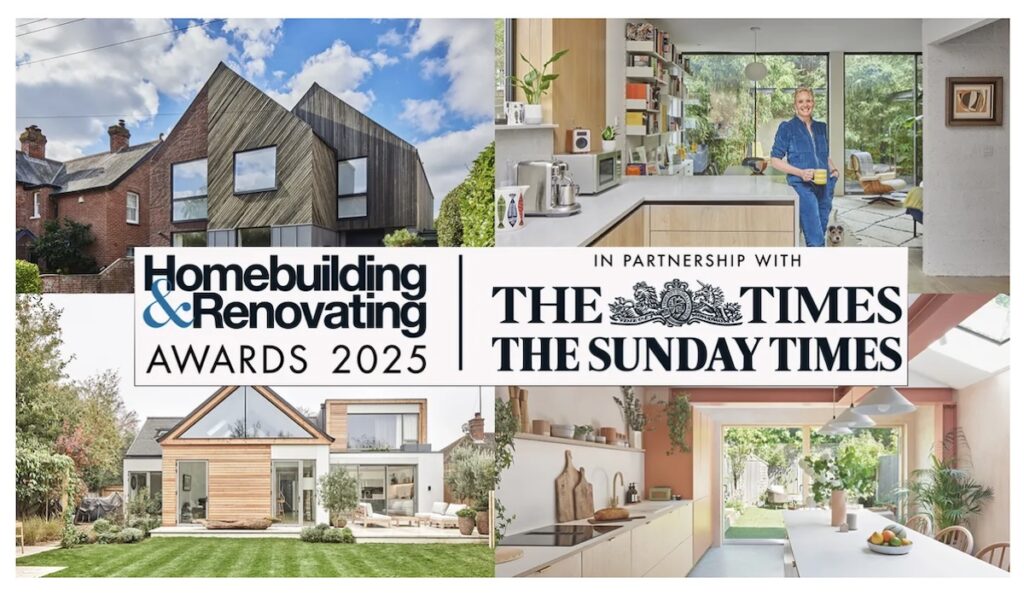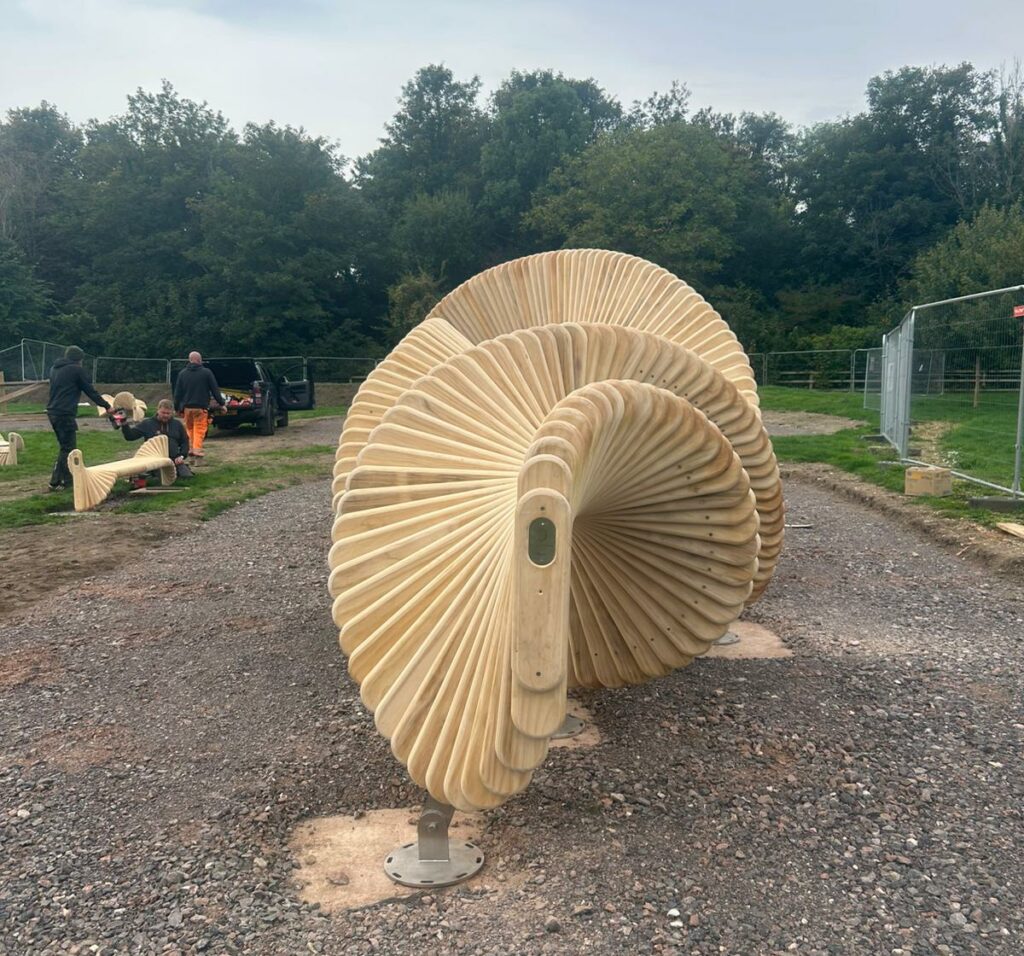We are absolutely thrilled to have won the ‘Best Architect for an Extension Project’ at this year’s Build It Awards for our Brockenhurst House project.
The design has taken the tired 1970’s chalet home, and transformed it into a stunning, contemporary home to perfectly suit our clients’ needs. Their ambition was to extend and reimagine the property to deliver a home that could support their evolving needs, while remaining true to principles of beauty, sustainability, and architectural integrity.
The result is a refined, low energy home that champions passive solar design, natural materials, and renewable technologies, demonstrating how thoughtful architecture can elevate everyday living while responding to environmental challenges.
Our client stated;
‘From our very first meeting with Darren and Studio BAD team, it was clear that we had found someone who was listening and importantly hearing our ideas, priorities, and intentions. As we are of a mature age and this is to be our forever home. A warm and comfortable, accessible, and environmentally responsible property was our goal and with Studio BAD’s design and assistance we have been able to score it.
‘We are delighted with our completed home and are able to enjoy life without worrying about changing situations regarding aging, mobility and access etc.’
